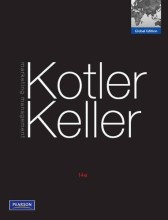Summary: H18: Het Cardiovasculaire Systeem
- This + 400k other summaries
- A unique study and practice tool
- Never study anything twice again
- Get the grades you hope for
- 100% sure, 100% understanding
Read the summary and the most important questions on H18: Het cardiovasculaire systeem
-
1 Cardiac function
This is a preview. There are 5 more flashcards available for chapter 1
Show more cards here -
Name all the components of the human heart
- 2 upper chambers, atria (receive blood) and 2 lower chambers, ventricles (pump away blood).
- Septum is the wall that separates the left and right halves.
- Pulmonary arteries and veins connect with the lungs.
- Left AV valve (mitralis) and right AV valve (tricuspidalis).
- Chordae tendineae connect the papilllary muscles to the AV valves.
- Wide upper pole of the heart is the base and he narrow lower pole is the apex.
-
Of what 2 divisions does the circulatory system consist? Explain how the blood flows through both systems.
- The pulmonary circuit: consists of all blood vessels in the lungs and all those that connect the lungs to the heart,
- The systemic circuit: encompasses the rest of the blood vessels in the body.
- Blood flows from the lungs through the pulmonary veins to the left atrium and then the left ventricle.
- Blood flows from the left ventricle through the aorta to the body and then through the venae cavae (superior and inferior) to the right atrium and then the right ventricle.
- Blood flows from the right ventricle through the pulmonary arteries to the lungs.
-
How does the heart obtain its nourishment?
- The blood within the hearts chambers do not provide enough oxygen and nutrients.
- It obtains most nourishment from the coronary arteries, which branch off near the aorta base and run through the aorta muscle.
- Also the circumflex artery and the left anterior descending artery.
Decrease in blood flow through the coronary arteries can cause a heart attack. -
Which 2 organs are not in parallel but in series in the cardiovascular system?
The intestines and the liver both have a portal circulation. This means that blood flows from one capillary bed to another before returning to the heart. -
Where is the heart located?
The heart is located in the thoracic cavity, just above the diaphragm. It is surrounded by a membranous sac called the pericardium, which contains pericardial fluid that lubricates the heart as it beats. -
2 Cardiac function
This is a preview. There are 5 more flashcards available for chapter 2
Show more cards here -
How are the AV valves connected/anchored?
They are connected to the papillary muscles by chordae tendineae and they are anchored at their bases to rings of connective tissue formed by the fibrous skeleton. -
What are conduction fibers?
- They are specialized to quickly conduct the action potentials generated by the pacemaker cells from place to place throughout the myocardium, thereby triggering heart muscle contractions.
- They are larger in diameter and can conduct APs more quickly than ordinary fibers.
- They are specialized to quickly conduct the action potentials generated by the pacemaker cells from place to place throughout the myocardium, thereby triggering heart muscle contractions.
-
Explain the sequence of electrical events that normally triggers the heartbeat.
- AP is initiated in the SA node. From the SA node the AP travels through internodal and interatrial pathways.
- Impulse arrives at AV node. Impulse is delayed because the AV node is slower (AV nodal delay).
- Impulse travels through the bundle of His.
- It then splits into left and right bundle branches.
- Impulse then travels through Purkinje fibers and from here through the rest of the myocardial cells.
-
Why is the heartbeat almost always triggered by the SA node and not the AV node?
Because:- APs originating in the SA travel through the VA, causing the cells in the AV to go into the refractory period.
- SA has a higher "beat frequency" than the AV.
-
Where are the electrodes placed for an ECG? Which leads does this create?
On the corners of Einthoven's triangle:- Right arm
- Left arm
- Left leg
- Lead I: LA-RA
- Lead II: LL-RA
- Lead III: LL-LA
- Higher grades + faster learning
- Never study anything twice
- 100% sure, 100% understanding































